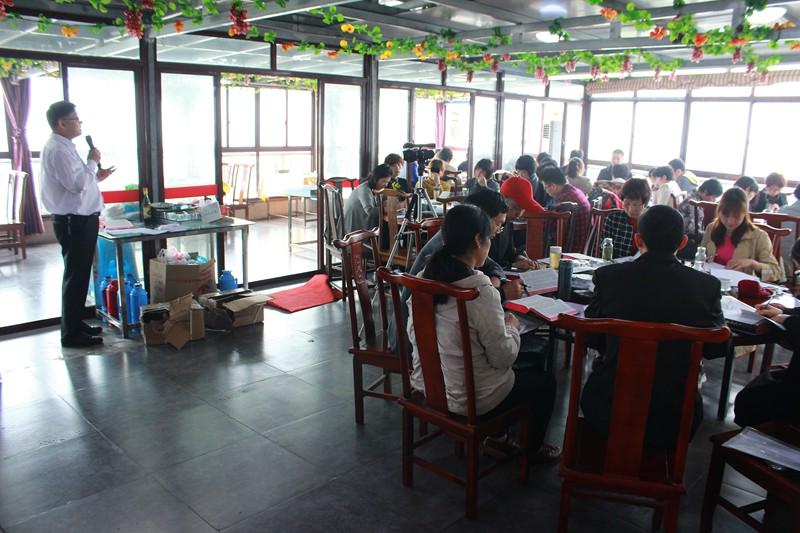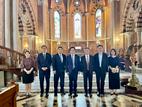Early in June 2017, a preacher from Kunshan Church introduced his congregation to the history of Chinese Bible translation, especially the "Chinese Union Version", during their church retreat.
The history can be traced to Robert Morrison, a missionary who came to China in 1807 for two main purposes: to pick up the Chinese language and to work on Bible translation. His translated bible "the Holy Book" was the first ever bible translated in China and published in 1823. Morrison completed his translation of the New Testament in 1813. The Old Testament was completed in 1819.
During the same period, Marshman, an English Baptist missionary, was also working on a Chinese translation of the Bible in India. Marshman completed the New Testament in 1811 and published the whole book in 1822.
After the First Opium War ended in 1840, China's door to the outside world was forced open, creating an opportunity for missionaries to enter China. Some missionaries from the Christian Mission Society in both England and America had a discussion on standardizing various Chinese Bible versions. Different sects began to form due to their disagreements over the choice of key Bible terminology, such as baptism or cleanse, God or the Lord etc.
As the disagreements remained unresolved, different sects decided to publish different bible versions, e.g. the Commissioned Version Bible. Hence, Bible translation is classified into three categories: Ancient Chinese version, Official Version and Dialect Version.
The Ancient Chinese version includes the "Pizhi Version" of 1862, the "Gaode Version" of 1868, and the "Simple Chinese New Testament Version" of 1885.
The Official Version was comprised of a simplified Chinese version of the "Nanjing Official Version" amended from the "Commissioned Translation" co-drafted by Mai Dusi and Shi Dunli in 1857.
In an effort to standardize various Bibles in China, many Baptist churches overseas decided to set up three different translation committees just to work on each of the three different Chinese Bible translations based on a common core principle of "One Bible, Three Versions."
The Simplified Chinese Version was made complete the in 1900 and published in 1904. However, the translation work on the Old Testament was slowed down due to many unforeseen obstacles along the way. Eventually, the translated work of the Old Testament was completed in 1906. The Official Version was completed in 1919, and later renamed the Chinese Language Version, which later became the most well-known Union Version today.
The Hong Kong Baptist Church shared that the biggest impact of "May Fourth Movement" was the introduction of Mandarin as a mainstream language in society. The Union Version was the first Bible that was translated into Simplified Chinese. In fact, famous scholars such as Hu Shi and Lu Xun uphold the Chinese Union Version as a ground-breaking masterpiece and model of mandarin literature.
Upon the translation of the Chinese Union Version, many scholars still express passion for further amending and improving the version. Thus, Bible translation began to further sprout up as evidenced by "The New Testament" co-translated by Zhu Baohui and Sai Zhaoxiang.
In late 20th century, Xiao Tiedi's translation of the New Testament in 1967 and Lv Zhenzhong's bible translation in 1970 both pushed Chinese Bible translation to a brand new destination.
In the Catholic field, the Douay Version was published in 1968.
The Modern Chinese Version was completed by the United Bible Church in 1979 and its amended version was published in 1995. Moreover, other Bible versions include "the Modern Bible", the "Bible New Version", the "New Chinese Translation," the "Living Translation" and the "Standard Version."
In 1960-1970, translation experts and consultants from the United Bible Church paid several visits to Hong Kong and Taiwan to evaluate locals' needs for amendment on Bible translation. In 1983, churches in mainland China, Hong Kong, Taiwan and Singapore decided to amend the Chinese Union Version through the establishment of a formal committee.
Amendment work thus started to progress according to its schedule: the Gospel of Matthew in 1986, Mark in 1998, Four Gospels in 2000, etc. In 1988, the United Bible Church also completed and published the translation work "New Living Union Version".
In Sep. 2000, the United Bible Church passed the bacon of Bible translation to the Hong Kong Bible Church. In 2010, the Hong Kong Bible Church published "the Union Version 2010 (Edited Version)", which still preserves the style of the traditional Union Version while moving closer to the modern expression of mandarin. More than 200 bible scholars joined in the mission.
In January 2017, the China Christian Association also launched the "online Bible" for further facilitation of Bible reading.
Translated by Maggie











